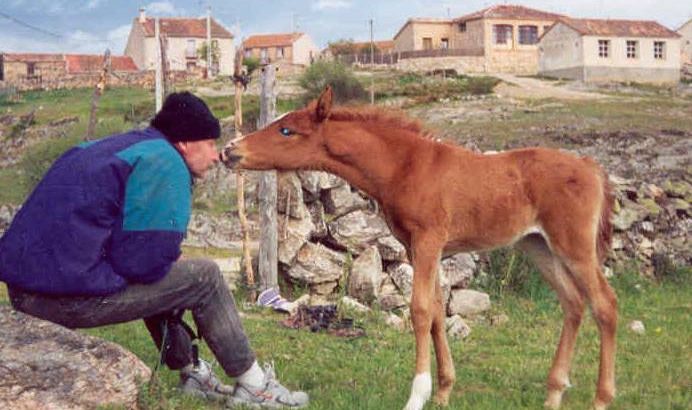Imprinting is a type of innate, spontaneous, learning behaviour seen in animals. The best known form of imprinting, the subject of this article, is filial imprinting, in which a young animal learns the characteristics of its parent.
This filial imprinting is the form defined in the widely respected dictionaries of English produced by Oxford University, from which I quote:
1. Imprinting: the establishment of a behaviour pattern of recognition and trust, usu. [= usually] directed at its own species, during a critical period of susceptibility in a (young) social animal, esp. [= especially] in birds. Oxford English Dictionary (Oxford University Press 2012) cited in BioConcepts
2. To imprint on: (of a young animal) to come to recognise (another animal, person or thing) as a parent or other object of habitual trust; eg. the bird thought I was its mother and imprinted on me; goslings will imprint themselves on inanimate objects such as a cardboard box. Oxford Dictionary of English mobile app (Oxford University Press 2012)
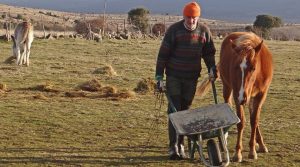
These definitions are a little clumsy but nonetheless clear about filial imprinting being something that the young animal does spontaneously under certain conditions, whether natural or artificial. If you have any doubt about the Oxford definitions, the comprehensive and readable Encylopaedia Brittanica article explains the concept nicely.
The Wikipedia article gives a good potted history. Filial imprinting was first reported in chickens by British biologist Douglas Spalding in the mid-19th century. It was rediscovered in the early 20th century by German zoologist Oscar Heinroth. Heinroth’s best known pupil was Austrian zoologist Konrad Lorenz who, in the mid-20th century, studied innate behaviour in various animal species.
In relation to imprinting, Lorenz first observed that the young of waterfowl (geese, swans, ducks, etc.) which leave the nest just after hatching, spontaneously follow their mothers within a day of hatching. Lorenz then demonstrated how incubator-hatched geese would instinctively bond with – otherwise stated, imprint on – the first suitable moving stimulus they saw within a critical period of about 36 hours after hatching.
Most famously, the goslings would imprint on Lorenz himself (more specifically, on his moving wading-boots).
Lorenz identified this innate, spontaneous bonding behaviour as the principle of filial imprinting.
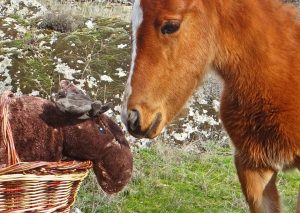
In spite of all the clarity in authoritative articles on the nature of filial imprinting, many people, including animal behaviour professionals, are confusing this innate behaviour with a certain kind of rearing and training practiced by human handlers on newborn animals, calling it imprint training.
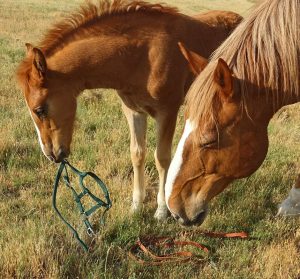
Misunderstanding entirely the principle of imprinting, these people are practicing and recommending invasive techniques of rapid habituation to a variety of stimuli imposed on the very young animal, at the initiative and insistence of the handler.
The online article by Robin Foster (2012) comments that such a technique, intended “to build a connection between the newborn foal and its human caregiver … is more correctly known as neonatal handling”. Foster points out that “Although regular handling of young foals is important, no long-term advantages of prolonged manual stimulation of the foal immediately after birth have been found”.
“In fact” says Foster, backing up his claims with references to scientific studies, “this training technique may create unnecessary stress on the foal, delay suckling, which provides foals with immunodefense compounds from colosturm, and interfere with the attachment bond between mare and foal, which has potential negative consequences on the foal’s social development. Extensive handling and grooming of the mare in a relaxed manner is a more effective way to socialize foals to humans and improve later handling and training success”.
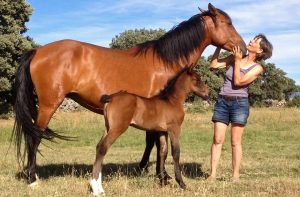
Some practitioners, along with coercing the foal to endure manual contention before it has allowed itself to be touched by a person, insist on fitting headgear and on picking up feet, even going far so far as to force the foal to the ground whether or not it wants to lie down.
Such aggressive practices seem to have an underlying notion of dominance being important in horse-human (and maybe even horse-horse) relations. Far from imprinting, they are close to flooding and immersion therapies developed by psychologists to treat phobias, post-traumatic stress syndrome and other suffering in people, later adapted to the rehabilitation of animals with disabling fears of certain objects and situations.
A foal born in natural surroundings doesn’t need rehabilitation, nor forced habituation. Anyone who has enjoyed spending time repeatedly in the company of mares and foals knows well that, if left to their own devices, foals, confronted with novelty, are just as curious as they can be fearful.
With a full belly of milk and a mother busy grazing nearby, what foal doesn’t show an interest in the person sitting on the ground beside the happy family, and in its own good time check out the novelty?

The more we respect the foal’s choice of what, when, where and who, the quicker we get to a bond of trust which makes further training a delight to both parties. Why force yourself on a creature who is happy to discover weird and wonderful things in good company? Why not spend time just being with the herd and let nature take its course?
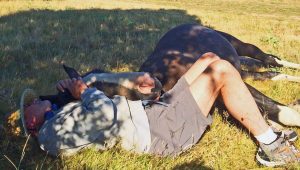
As Lucy Rees reminds us in her book “The Horse’s Mind”, it was Xenophon, the Greek soldier, philosopher and horseman who, 2400 years ago, eloquently expressed that “Anything forced and misunderstood can never be beautiful”.
It’s also useful to remember that the common root of the terms ethology (‘the science of animal behaviour’) and ethics (‘the science of morals’), is ethos (‘nature, disposition’): they are all about acknowledging the true nature of living things. Definitions from the Oxford Dictionary of English mobile app (Oxford University Press, 2012).
Finally, I’d like to leave you with what I take as a wise warning from the New World Enclyopedia article on Ethology: “The study of animal behavior touches upon the fact that people receive joy from nature and also typically see themselves in a special role as stewards of creation”.
